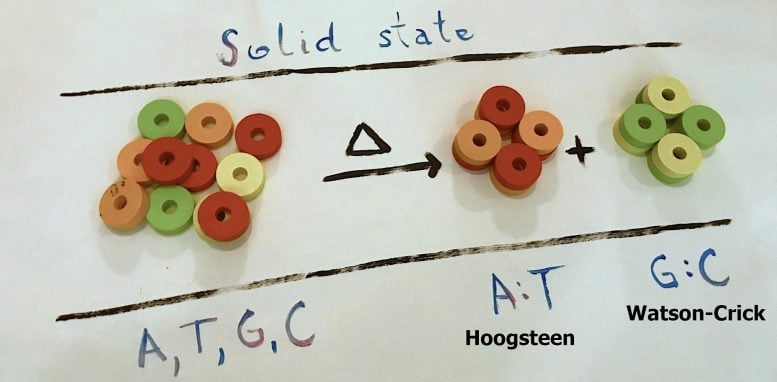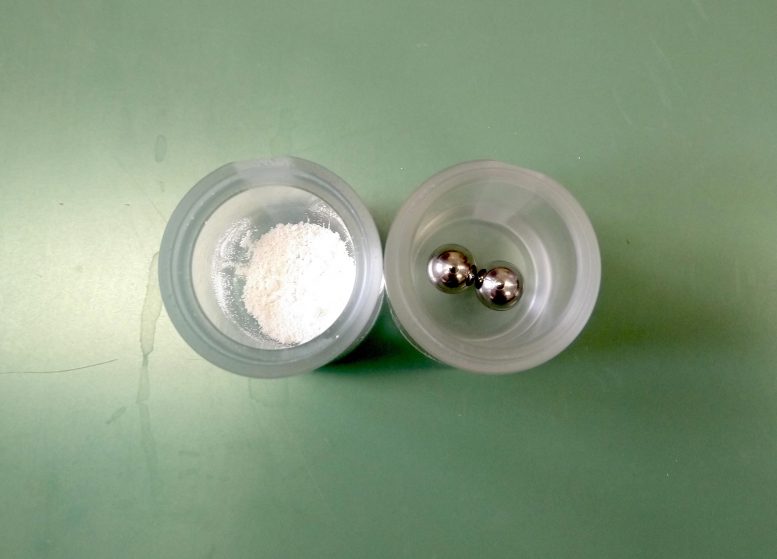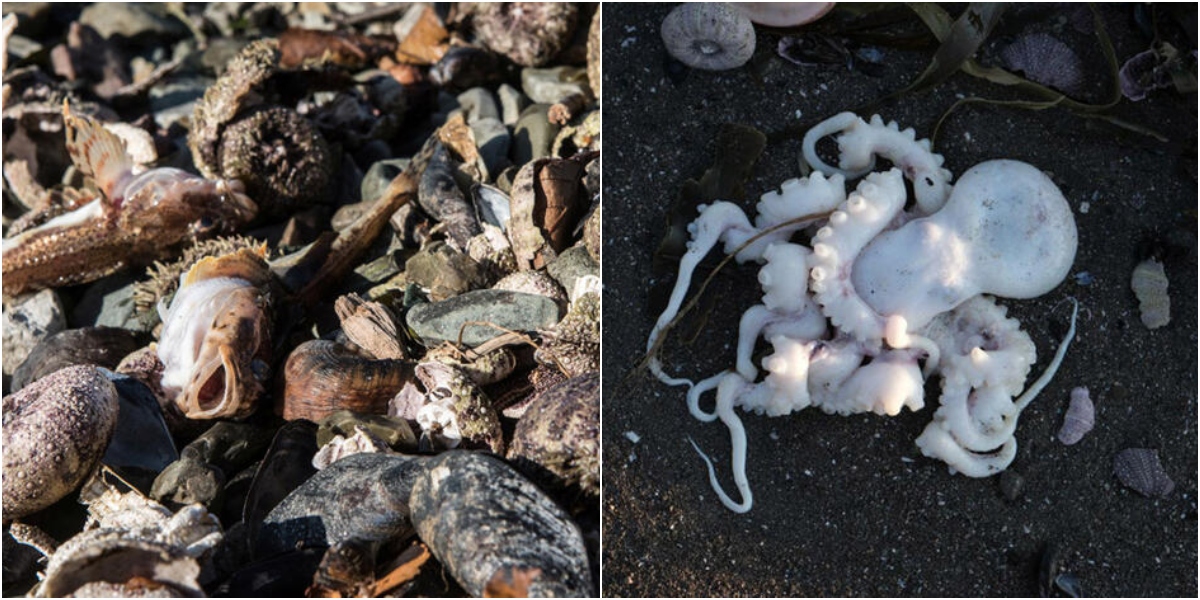Artist’s impression of the young earth. Photo credit: NASA’s Goddard Space Flight Center Conceptual Image Lab
In search of the chemical origins of life, researchers have found a possible alternative way for the trait to develop DNA Pattern: According to the experiments, the characteristic DNA base pairs can be formed by dry heating without water or other solvents. The team around Ivan Halasz from the Ruđer Bošković Institute and Ernest Meštrović from the pharmaceutical company Xellia presented their observations of DESYX-ray source PETRA III in the journal Chemical communication.
“One of the most fascinating questions when looking for the origin of life is how chemical selection took place and how the first biomolecules were formed,” says Tomislav Stolar from the Ruđer Bošković Institute in Zagreb, the first author of the paper. While living cells control the production of biomolecules with their sophisticated machinery, the first molecular and supramolecular building blocks of life were probably created through pure chemistry and without enzyme catalysis. For their study, the scientists examined the formation of nucleobase pairs, which function as molecular recognition units in deoxyribonucleic acid (DNA).

Mixing all four nucleobases resulted in A: T pairs at around 100 degrees Celsius and G: C pairs at 200 degrees Celsius. Photo credits: Ruđer Bošković Institute, Ivan Halasz
Our genetic code is stored in DNA as a specific sequence written by the nucleobases adenine (A), cytosine (C), guanine (G) and thymine (T). The code is arranged in two long, complementary strands that are wound in a double helix structure. In the strands, each nucleobase pairs with a complementary partner in the other strand: adenine with thymine and cytosine with guanine.
“There are only certain pairing combinations in DNA, but when nucleobases are isolated they don’t like to bind to each other at all. Why did nature choose these base pairs? “Says Stolar. Studies on the pairing of nucleobases increased after the discovery of the DNA double helix structure by James Watson and Francis Crick in 1953. It was quite surprising, however, that there was little success in achieving specific nucleobase pairing under conditions that could be considered prebiotic plausible.

Nucleobase powder and steel balls in a grinding glass. Photo credits: Ruđer Bošković Institute, Tomislav Stolar
“We took a different path,” reports co-author Martin Etter from DESY. “We tried to find out whether the base pairs can be generated by mechanical energy or simply by heating.” To do this, the team examined methylated nucleobases. With a methyl group (-CH3), which are in principle bound to the respective nucleobases, enable them to form hydrogen bonds on the Watson-Crick side of the molecule. Methylated nucleobases occur naturally in many living organisms, where they fulfill a variety of biological functions.
In the laboratory, the scientists tried to create nucleobase pairs by grinding. Powders from two nucleobases were loaded into a grinding vessel together with steel balls, which served as grinding media, while the glasses were shaken in a controlled manner. The experiment found A: T pairs that had also been previously observed by other scientists. However, no formation of G: C pairs could be achieved by milling.
In a second step, the researchers heated the ground cytosine and guanine powders. “At about 200 degrees Celsiuswe were actually able to observe the formation of cytosine-guanine pairs, ”reports Stolar. To test whether the bases only form the known pairs under thermal conditions, the team repeated the experiments with mixtures of three and four nucleobases at the P02.1 measuring station of DESY’s X-ray source PETRA III. Here the detailed crystal structure of the mixtures could be monitored during heating and the formation of new phases could be observed.
“At around 100 degrees Celsius we were able to observe the formation of adenine-thymine pairs and at around 200 degrees Celsius the formation of Watson-Crick pairs of guanine and cytosine,” says Etter, head of the measuring station. “Any other base pair did not form, even if it was further heated until it melted.” This proves that the thermal reaction of the nucleobase pairing has the same selectivity as in DNA.
“Our results show a possible alternative way in which the molecular recognition patterns that we observe in DNA could have been formed,” adds Stolar. “The conditions of the experiment are plausible for the young earth, which was a hot, seething cauldron with volcanoes, earthquakes, meteorite impacts and all kinds of other events. Our results open up many new avenues in the search for the chemical origins of life. “The team plans to further investigate this route with follow-up experiments at P02.1.
Reference: “DNA-specific selectivity in the pairing of model nucleobases in the solid state” by Tomislav Stolar, Stipe Lukin, Martin Etter, Maša Rajić Linarić, Krunoslav Užarević, Ernest Meštrović and Ivan Halasz, September 9, 2020, Chemical communication.
DOI: 10.1039 / D0CC03491F



